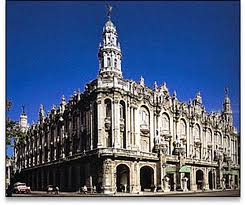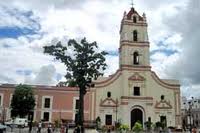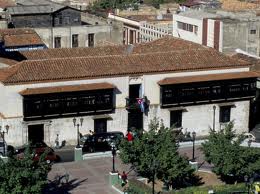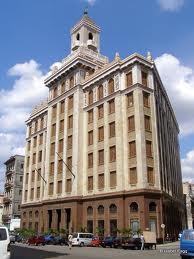|
Cuban architecture offers an extraordinary variety of styles and quality. Influences range from Spanish Moorish to French neoclassical, colonial-baroque, classic, art-deco, to eclectic. Despite three separate revolutionary wars, Cuban buildings remain relatively well-preserved.  Camaguey, Santiago de Cuba, and ofcourse Havana host Cuba´s main architectural treasures, although you will find numerous precious Cuban buildings scattered all over the island. The nomination by UNESCO of Habana Vieja, Cienfuegos, Trinidad, as well some other places for World Heritage site constitutes an additional but significant aid in the preservation of Cuban architecture. Camaguey, Santiago de Cuba, and ofcourse Havana host Cuba´s main architectural treasures, although you will find numerous precious Cuban buildings scattered all over the island. The nomination by UNESCO of Habana Vieja, Cienfuegos, Trinidad, as well some other places for World Heritage site constitutes an additional but significant aid in the preservation of Cuban architecture.
Camaguey
The historic centre of Camaguey was inscribed by UNESCO in 2008. It is one of the first seven villages founded by the Spaniards in Cuba in 1528, and ever since has been a vital urban centre of the region. The town is exceptional for its irregular urban pattern: winding streets lead to small and large squares, ringed by irregular building blocks.
The Spanish colonists brought with them European influences both in terms of urban layout and traditional construction techniques. You will find both neoclassical, Art Deco, Art Nouveau as well as Neo-colonial built constructions here. We give you some noteworthy examples.

The Iglesia de Nuestra Señora de la Merced was rebuilt in 1848 but actually goes as far back as 1601. It is Camaguey´s most outstanding colonial church. The church maintains a Baroque facade, whereas the interior contains some extraordingary murals. The main altar gives access to the catacombs. You´ll find this building at the Plaza de los Trabajadores.
El Teatro Principal is definetely worth a look. As indicated on its facade, the theatre was built in 1850, has stained glass and impressive light fixtures suspended from the ceiling. Currently home to Cuba´s second most important ballet company, you´ll find the Teatro Principal in Calle Padre Valencia no. 64.
Santiago de Cuba
Probably a good place to start is the Parque Céspedes, which is an assembly of eclectic architecture(i.e. built in a style deemed appropriate for its purpose, local geography, etc.). The park is surrounded by both colonial, 19th-century, as well as modern buildings, and its benches and gas lamps are reminiscent of Cuba´s pre-revolutionary days. Architectural highlights are the ancient mansion of Diego Velázquez, the Town Hall, and Santiago´s oldest hotel: the Casa Granda .

The Casa de Diego Velázquez, in the park´s northwestern corner on Calle Felix Peña no. 602, dates from 1522 and is hence Cuba´s oldest house. It has been restored several times but maintains its original features, such as its Andalusian-style front. Today a museum, its interior display furnishings and decoration from the 16th- to 19th-century.
The Ayuntamiento (Townhall) was rebuilt in neoclassical style in 1950 after an earthquake, based on a design from 1783. It was on its balcony that Fidel Castro proclaimed the triumph of La Revolución on the night of January 2nd, 1959. You´ll find the huge white building on the corner of la Calle General Lacret and Aguilera, north of the square.

Hotel Casa Granda is worth a visit in its own right and the required CUC$2 minimum consumption. Elegant old hotel built in 1914, famous for its roof terrace but perhaps even more famous for hosting Graham Greene while working on Our Man in Havana .
Havana
The entire area of Habana Vieja is a World Heritage site, and buildings of architectural interest are basically everywhere you look.
The Edificio Bacardí ("the Bacardi building") in the Avenida de las Misiones is considered by many to be one of the best examples of art deco architecture in the world.
|